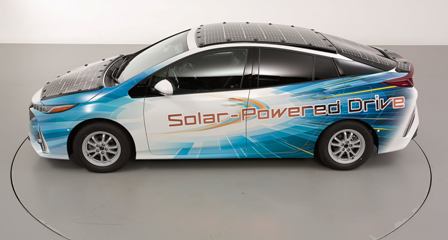While technologies are emerging for cities to be independent in food, water, and energy, safe and pleasant progress is mostly poor. And global warming threatens migrants and overwhelming cities.
But it would be prudent to try to reverse the move to cities that the United Nations and others see resulting in 70-80% of us in them by 2050.
The new encouragement and enabling of home working facilitates country living. It is aided by progress towards the internet everywhere. Tens of thousands of low earth orbit LEO satellites are being placed aloft, and fixed-wing and solar drones at 20,000 meters promise lower-cost coverage, each serving an area the size of Egypt. 5G communications, now being introduced, promises considerable service beyond communications and 6G communications that Samsung and others see heavily deployed in 2030 will be transformative to positioning, sensing, smartphones, and internet everywhere.
For example, remote education and entertainment will become superb. To human perception, even massive downloads will be instant including complex holograms. (See the IDTechEx reports, “6G Communications Market, Devices, Materials 2021-2041” and “5G Technology, Market and Forecasts 2020-2030”).
Remote patient monitoring drives down healthcare costs while maintaining a high standard of care for even remote patients. At the forefront is the drive to bring continuous monitoring to wearable devices. Apple, Google, and Amazon have piled in.
Most families would love the superb, affordable accommodation and clean, safer living in the countryside. However, they feel they cannot easily travel to the cities or even locally when they wish and the latest TV or smartphone will not work. Help is at hand.
The IDTechEx report, “Solar Vehicles 2021-2041 2nd Edition” shows how battery-electric fixed-wing air taxis will become commonplace, their range enhanced by solar wings and tail-plane when needed. Over 400 have been sold so far – this is not dreamland.
Most deeply significant are solar cars. Treated gently, they now go at least 10,000 km yearly without plugging in. Even heavily used vehicles can still get 10-40% of their power from onboard solar, several offering 750-1000km range on a single charge. Because so much of the charging can now be solar and its next-generation will double the amount possible, affordable slow chargers in effect become faster chargers. Indeed, you lose your range anxiety not just because 750-1000km range is available, but if you still run out, you are not stranded in some remote spot.
Wait, and your vehicle recharges itself to get you home. Overall, in the country, the range problem is now overcome by solar bodywork, economical solar charging stations, and better batteries. Delightfully, battery electric vehicles by land, water, and air need one-tenth or less of the servicing. This also makes them a much more practicable proposition in the countryside.
Car, air taxi and bus travel even to the distant city is becoming very low cost. TNO calculates 3-4 year payback for today’s solar on cars but for someone contemplating a move out of the city, it can tip the decision, given the other advances. Air taxis will be no more expensive than regular ones.
You can now buy an energy-independent, sea-going solar boat that charges three houses on arrival. Water power from rivers and sea is now looking good in relocatable forms that have virtually no infrastructure. Where water is in short supply, with rivers drying up, there is a wonderful lesson from India. They put solar over their canals, taking no real estate, reducing evaporation, and making extra electricity from the cooling effect. Next, do shrinking rivers and ponds in the country?
Agricultural electrification, including solar agribots from Sydney University that never charge, will make farming more viable. In the wilder terrain where conventional agriculture is impractical even for the home, indoor processes now include growing meat and milk from a few cells and aquaponics which grows fish and vegetables in a single interdependent system and vertical farming (See the IDTechEx reports, “Plant-based and Cultured Meat 2020-2030” and “Vertical Farming 2020-2040”).
Raghu Das, CEO of analysts IDTechEx enthuses, “Expect governments to deter the overpopulation of cities as the pendulum swings. The technologies will be in place to make rural living extremely attractive to all concerned. Even deserts and flooded regions will become habitable without creating massive new cities”.
©Copyright MOTORING WORLD INTERNATIONAL.
All rights reserved. Materials, photographs, illustrations and other digital content on this website, may not be reproduced, published, broadcast, rewritten or redistributed in whole or in part without prior written permission from Motoring World International
Contact: [email protected]






